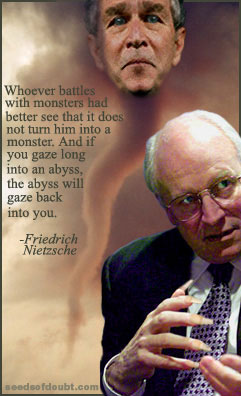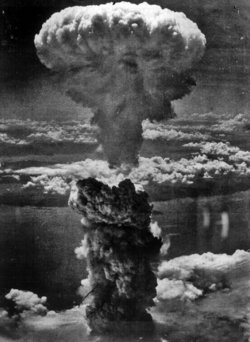By Lewis L. Gould
Sunday, January 29, 2006; B01
It is time to end the meaningless annual ritual of the State of the Union address. What began as a yearly survey of the nation's condition has deteriorated into a frivolous moment of political theater and continuous campaigning.
On Tuesday night, President Bush, like his recent predecessors, will play his part in the gaudy spectacle of ballyhoo and hype that the State of the Union has become. From a Rocky-style entrance of the president through a gantlet of applauding solons to the introduction of mini-celebrities carefully situated in the gallery, the prime-time extravaganza will have all the spontaneity of -- and about as much meaning as -- a televised Hollywood awards ceremony.
More like an acceptance speech at a national convention than a candid review of the nation's situation at the outset of a new year, the State of the Union has evolved into a semi-imperial speech from the throne. In the process, the event has lost most of its reason for taking place. Congress and the president have better things to do than to be part of these empty festivities.
When the Framers of the Constitution directed the president "from time to time to give the Congress Information of the State of the Union," they envisioned a serious report from the chief executive that would enlighten lawmakers and the public about the nation's needs. It didn't have to be at a particular time of year. For more than a century, when presidents transmitted their annual messages in writing to Capitol Hill, they felt compelled to review the work of the Cabinet departments, examine pressing social problems and recommend solutions. In most cases, these documents were anything but lively. A century ago, for example, Theodore Roosevelt devoted thousands of words in his message to railroad regulation, immigration, copyright laws, criminal justice and the civil service, among other topics. Newspapers published his annual message in full and political debate followed in Congress and across the country about what the president wanted to accomplish.
In 1913, Woodrow Wilson became the first president since John Adams to deliver the presidential message in person, and the older style of elaborate written reviews of the State of the Union began to give way to shorter remarks tailored first for the congressional audience and later for radio listeners. But after World War II, with the emergence of television, the possibilities for dramatizing the State of the Union proved irresistible. Holding it in prime time for the larger television audience was a logical move; the first evening address since World War II came in 1965 with Lyndon B. Johnson. On just two subsequent occasions -- Richard Nixon in 1973 and Jimmy Carter in 1981 -- presidents reverted to the 19th-century custom of simply sending a written message to Congress. (Carter, having just lost to Reagan, submitted a 76-page report in writing and gave a shorter televised farewell from the Oval Office.) The major innovations in the direction of a media spectacular came in the 1980s and 1990s. Ronald Reagan pioneered the use of heroes, prominent Americans and symbolic figures who were seated in the visitors' gallery of the House. Soon the composition of this living tableau became as nuanced as 5electing a jury or arranging a beauty pageant.
A deft continuous campaigner himself, Bill Clinton took the process a step further when he saw the possibilities of making the State of the Union into the opening thrust in a prolonged campaign to build support for his agenda. The State of the Union address no longer seemed sufficient unto itself but instead served as a prelude to well-staged rallies around the country that kept the chief executive in the headlines. The president could slip the bonds of the noisy Washington press corps and fly away to venues where the audience was friendlier, the questions less adversarial and the response enthusiastic.
George W. Bush, who believes that campaigning equals governing, has also used the State of the Union as an opening act for a parade of rallies and appearances that move seamlessly from Capitol Hill to the hustings. And Bush and his media-savvy handlers have raised to political art the old Reagan device of introducing symbolic figures in the gallery. From Ahmed Chalabi as a putative (and later tarnished) symbol of success in Iraq to Alan Greenspan as a totem of the worthiness of tax cuts, the pre-positioned living mannequins assure Bush's viewers of a president's deepest commitments.
The serial bloviaters who masquerade as journalists on cable television have added their two cents to the show-business erosion of the State of the Union as a serious matter. Reaction shots of lawmakers provide endless fodder for issue-starved commentators. Let Sen. Hillary Clinton wince on camera at any point during Tuesday night, and slow-motion replays of her grimace will dominate a news cycle -- whether she was unhappy with the speech or just suffering a bit of indigestion.
In January 1967, Lady Bird Johnson wrote in her diary that "everything leads up to the State of the Union." Four decades later, her remark has become even more telling. Political events are aligned to showcase what the president is going to say and to buttress the aura of strength and vitality that the speech is designed to convey. Thus, the confirmation vote on Judge Samuel Alito Jr. to sit on the Supreme Court must occur before the State of the Union to afford the president the opportunity to salute the newest member of the high court. This year the Republican House leadership also took advantage of the relatively late date for the speech to postpone the opening of its session. Thus, the embattled House GOP could schedule its contentious leadership battle after the State of the Union, and not mar the president's moment with intra-party bickering.
Even the best set decoration, however, cannot always overcome circumstances. Bush must now give his sixth State of the Union message without the accompanying drama of recent terrorist attacks such as those that preceded the 2002 address and without being on the brink of war in Iraq, as we were in 2003. Like the sixth or seventh husband of an oft-wed screen star, the president knows what is expected of him. But how does he make the minutiae of health savings accounts or enhanced tax deductions for medical expenses interesting for his audience at home? The mysteries of co-pays and the "doughnut" in the Medicare drug benefit are not likely to bring viewers to the edge of their sofas.
Too often now, the president does not report on the state of the union and build recommendations based on the country's situation and needs. Instead, like a carnival barker, he offers a laundry list of new programs, most of which will not be remembered much after the final applause dies down.
In a larger sense, the emphasis on spectacle, soothing rhetoric and crowd-pleasing initiatives over the past two decades has had another more dangerous effect. Candor has left the Capitol. Imagine if, two days from now, the president said: "The state of the union is not good. Iraq is an insoluble mess, Iran is a long-term threat, terrorism menaces us all, the Army is strained to the breaking point, the budget is out of whack, global warming threatens the existence of humanity, and there are no easy answers, quick solutions or painless sacrifices." This sort of frankness from the presidential podium would evoke bewilderment and then scorn from the molders of elite opinion. They would say: What could have motivated a president to speak in such strident tones and with so little regard for the sensibilities of Americans accustomed to half-time celebrations and rousing rallies?
The State of the Union message has become mind candy or mere partisan spin for both parties. Abolishing it will not instill seriousness or adult values in our politicians, but at least the nation could go back to its regularly scheduled programming and not have to sit through yet another yearly exercise in posturing and collective delusion.
Author's e-mail:
Lewis Gould, professor of history emeritus at the University of Texas, Austin, is the author of "The Most Exclusive Club: A History of the Modern United States Senate" (Basic Books) and six other books on the presidency and Congress.







No comments:
Post a Comment